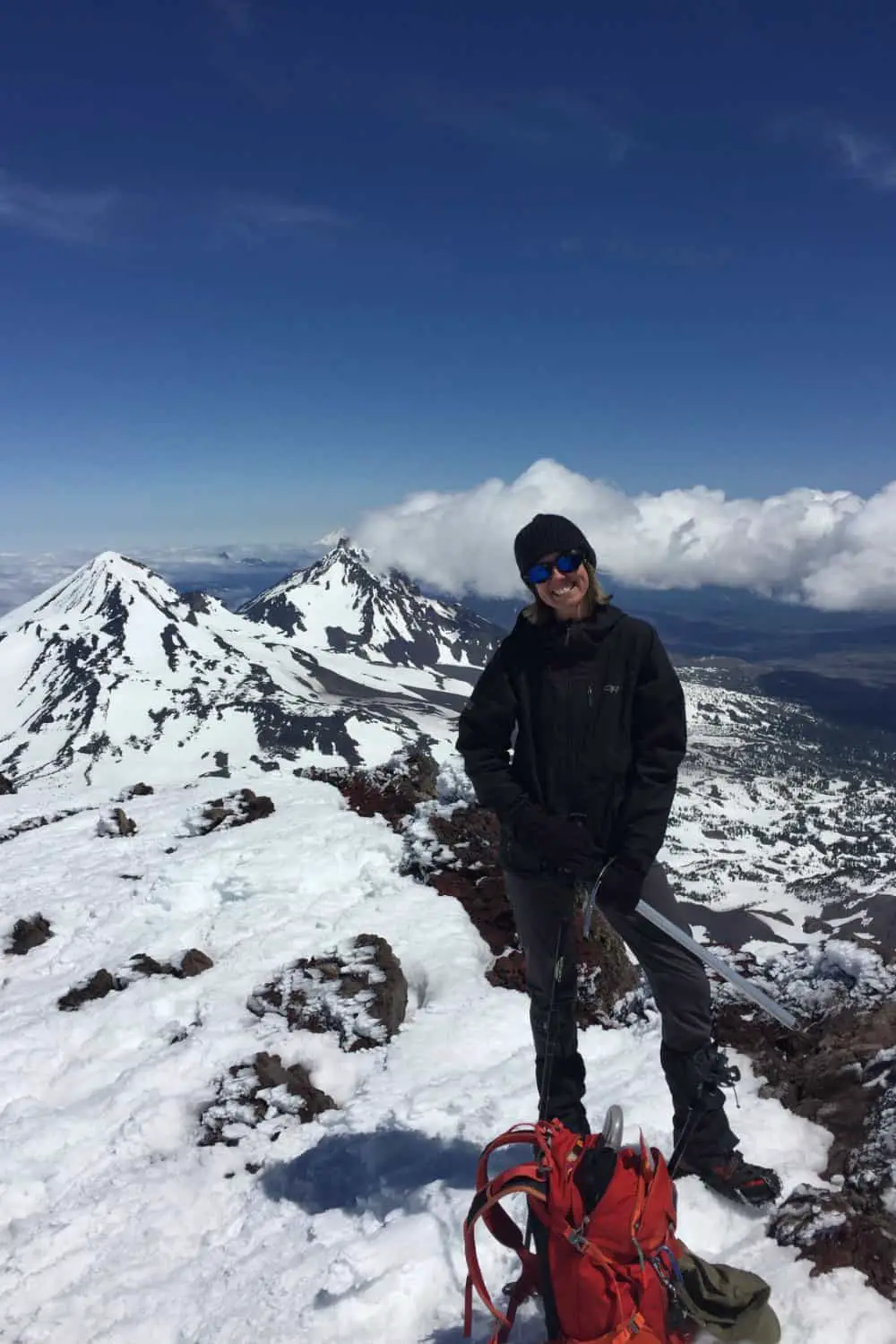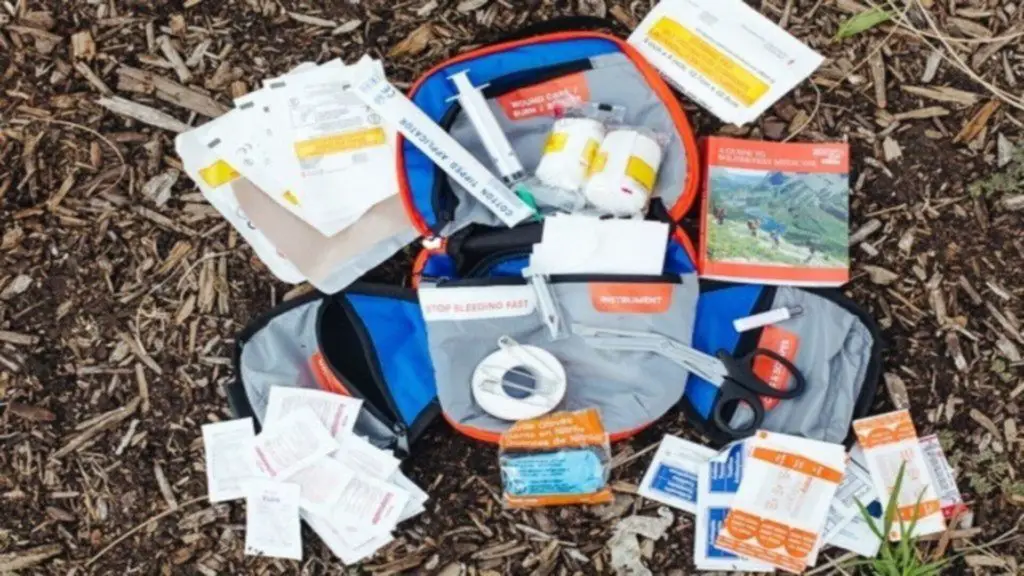There are many compact first aid kits on the market, or you can build your own. If you buy a premade one, familiarize yourself with its contents before setting out, making sure it has everything you need. The pro of buying premade is that you don’t have to take the time to build it, but the pro of making your own is getting to customize it. Consider using a pre-made kit as a base then adding items to it that specifically suit your needs.
If you have any prescription medications like an epi-pen, inhaler, or insulin, make sure to include them.
At the change of each season, go through and make adjustments. At the end of summer, take the bug spray out and put the hand warmers in, make sure you have sunscreen in the summer and a kittle mylar blanket in the winter.
Having a first aid kit with the bare-bones basics in your backpack, then a more comprehensive first aid kit in your car is something to consider if you are a light and fast hiker or feel that some of the usual contents don’t apply to you (I have never once carried antacid tablets).
Don’t forget the woman-specific things that may apply, like tampons.
To save space, find travel-size items or combine items (I have advil, Benadryl, aspirin, and salt tablets in one small container. They are easy to tell apart and this takes up less space). Wrap a couple feet of duct tape around a container of Nuun tablets or a tube of sunscreen.
Find a small waterproof pouch that’s durable and easy to open and close (imagine it’s freezing, imagine you have a hand injury) and keep it in an easily-accessible, obvious place in your pack, filling it with the following:
First Aid kit Contents
Bandages
- Assorted adhesive bandages: a few different sizes for small cuts, blisters, etc.
- Blister care (moleskin, duct tape): Cut and apply a section of either to your foot as soon as you discover a hot spot. Put duct tape over foot band-aids so they don’t roll up
- 4 x 4 inch gauze sterile dressing pads: To apply pressure to a wound and stop bleeding
- 2 x 2 inch non-adherent sterile dressing: Use these or Second Skin to cover blisters, burns or lacerations
- Gauze roll: Holds dressing in place
- Small roll of 1-inch adhesive tape: Holds dressings in place
Medication
- Ibuprofen/aspirin: Provides relief for minor aches and pains, reduces fever, helps reduce inflammation of sprains and other injuries
- Benadryl: For any allergic reactions, or to reduce reaction to bites and stings
- Immodium tablets: For relief of diarrhea from intestinal infections
- Pepto Bismol or antacid tablets: For relief from general diarrhea, abdominal upset
- Hydrocortisone cream: Relieves skin irritation from bites, poison oak, stings, or allergic reactions
- Antibiotic ointments: Apply to wounds before covering
- Rehydration salts Packet of electrolyte salts and glucose for treatment of dehydration, heat exhaustion, or loss of fluids from vomiting or diarrhea
- Your personal prescription medicines
Basic tools
- Blunt end scissors: can be used for cutting away clothing from injury, cutting medical tape, etc.
- Tweezers: For removing splinters
- Razor blade, knife, or a multi tool that includes a knife and scissors
Miscellaneous items
- Tick remover
- Antiseptic towelettes
- Safety pins: Can help remove splinters, fasten arm sling, or make a hole in a plastic bag for improvised wound irrigation
- Q-tips: For removing foreign objects from eye, applying antibiotic ointment, cleaning gravel out of wounds
- Antiseptic towlettes: For cleaning small wounds
- Ace bandage: Can be used as outer wrap on splints, wound dressings or support for joint injuries
- Hand warmers
Additional Outdoor Safety Essentials
- Sunscreen
- Chapstick
- Bug repellent
- Satellite messenger or PLB (personal locator beacon)
- Heat-reflecting blanket or space bag for lightweight emergency shelter and for treating hypothermia victims
- Irrigation syringe (35 cc): Used to flush and clean wounds
- Suction syringe (65 cc): Used to clear mouth of fluids when giving CPR
- Resealable plastic bags: Many uses, including icing a swollen joint or creating wound irrigation device.
Most of these items are familiar and easy to use, but taking a first aid course is another way to make yourself a safer hiker. Your local fire department, hospital, or Red Cross offer basic courses, and you can find wilderness-specific ones through NOLS (National Outdoor Leadership School), the Mountaineers, or REI. Especially if you plan on taking longer trips or do a lot of winter adventuring, knowing how to act right and act fast can make all the difference!

Wendy Harrington is a California native who has lived in a small town at the foothills of the Cascade Mountains in Washington state since 2001. Her love of trail running and peakbagging has led her to summit all five Washington volcanoes, climb to the high points of three states, and put nearly a thousand miles a year on her boots. Her loves include ridgelines, saddles, granite, one-day pushes on big mountains, anything volcanic, long solo days, and objectives that push limits and test endurance.

